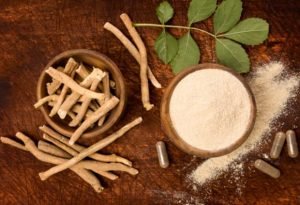The 3 Training Factors
If you’ve been in the game of training for some time, or are relatively new and are just gathering information, you probably know that training progress is only achieved by creating proper stimulus.
And while you can look for workouts on the internet, there is one very important thing to learn and understand – What’s actually happening beneath your skin when you’re training, that leads to progress?
In this article, we’re going to look at the 3 most important factors in your workout that induce sufficient stimulus for progress.
The Muscles
Before we dive deep into those 3, let us just tell you that your musculature is a complex system, built for high performance.
The muscle tissue is very adaptive and for that reason, it grows stronger and bigger if it has to do a lot of work.
Oppositely, if it doesn’t do any work, it will get weaker – If you don’t use it, you lose it!
The 3 Factors – Metabolic Stress, Mechanical Tension, Muscle Damage
When we look into the science of muscle growth, it appears that these 3 factors are the primary contributors that trigger the pathways that lead to muscle growth. Let’s have a look at why that actually makes sense
In order to grow and adapt, the muscles need more mechanical tension, created by the progressively increasing training load (more weight, sets, reps). When exposed to a new load that the muscles have never experienced before, the muscles are technically overloaded.
In turn, to endure this, the muscles send signals to satellite cells, which bind to the damaged muscle cells and in result, the muscle adapts and grows. This implies that mechanical tension is what induces muscle damage and that therefore sets off a flurry of reactions in the body that allow the muscle to recover and increase its volume, capacity and efficiency.
Pretty cool, right?
What About Metabolic Stress?
The third important factor for muscle development is metabolic stress, which may sound like a fancy term but let us explain. Basically, while you are training at a high intensity with weights, you use up a lot of the muscles’ energy. Needless to say, all this energy is broken down into byproducts, which we refer to as “metabolites”.
These metabolites act as “anabolic signals” that, again, set off a hurricane of anabolic (constructive) processes that allow for muscle recovery and adaptation.
How Should I Train, Then?
Generally, in your workouts, you should look for a balance of effort and volume. For instance, lifting just the bar for 100 repetitions won’t really cut it. Choose a weight that is challenging enough to take you through a set of 6-10 reps, but just a couple of reps shy of failure. Use challenging weights and do 10-20 of those, per muscle group, per week.
You should even consider going down to the strength rep range of 1-5 repetitions. All of this will help you create a strong, aesthetic, stamina-abundant body, which, with the right approach, you can take to your older years.
To Wrap It Up
It appears that metabolic stress, mechanical tension and muscle damage are the 3 primary factors that set off the reactions that allow the muscles to adapt and grow stronger.
Neither one alone will be optimal, which is why in practice, you should rely on challenging lifts in your workouts, in sets that take you close to failure.
Train smart, stay consistent!












